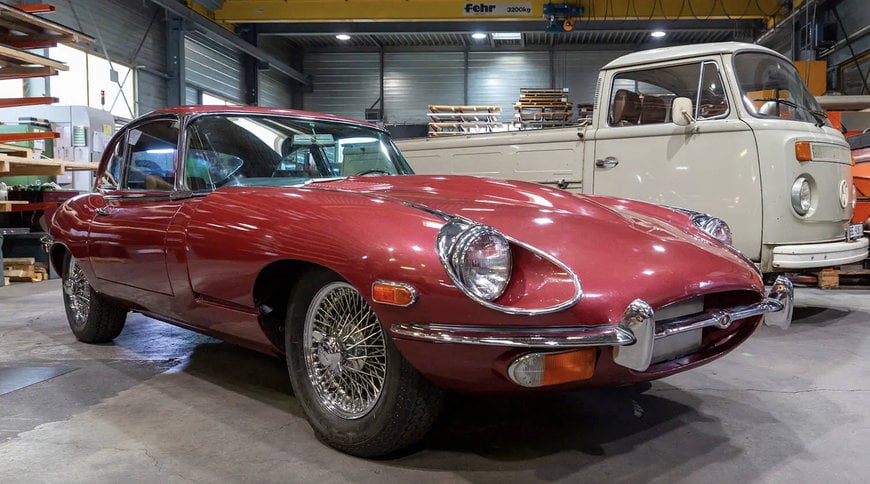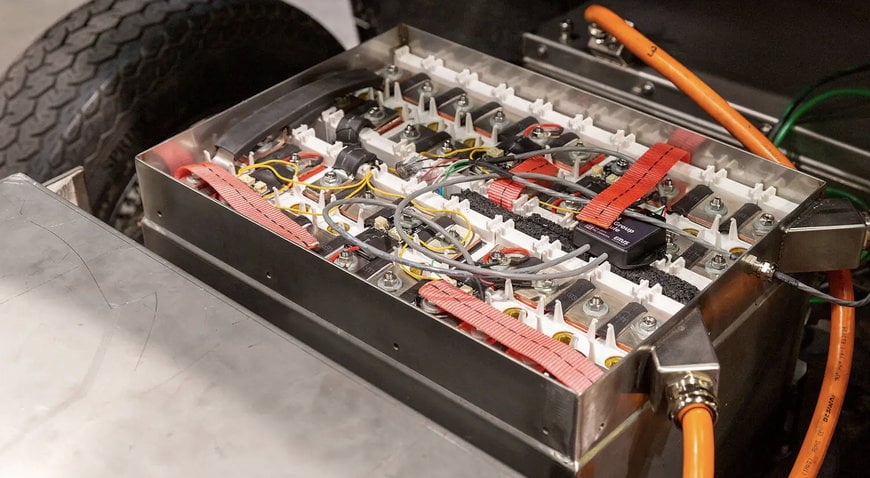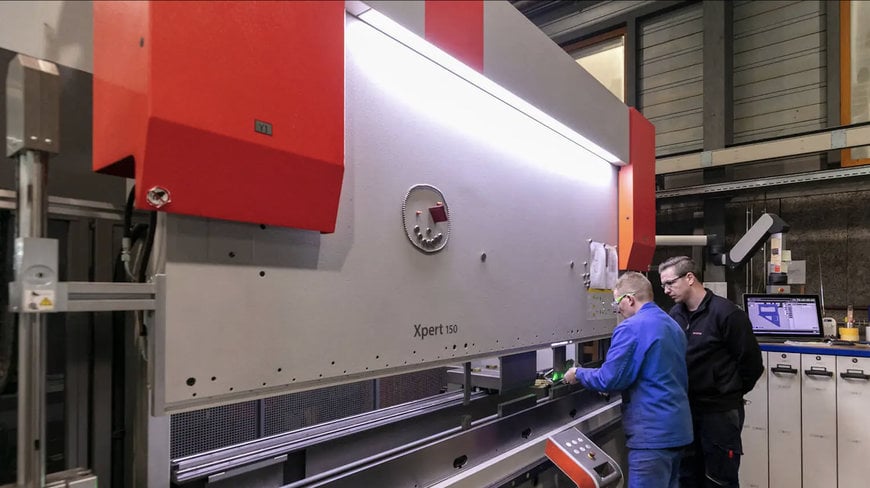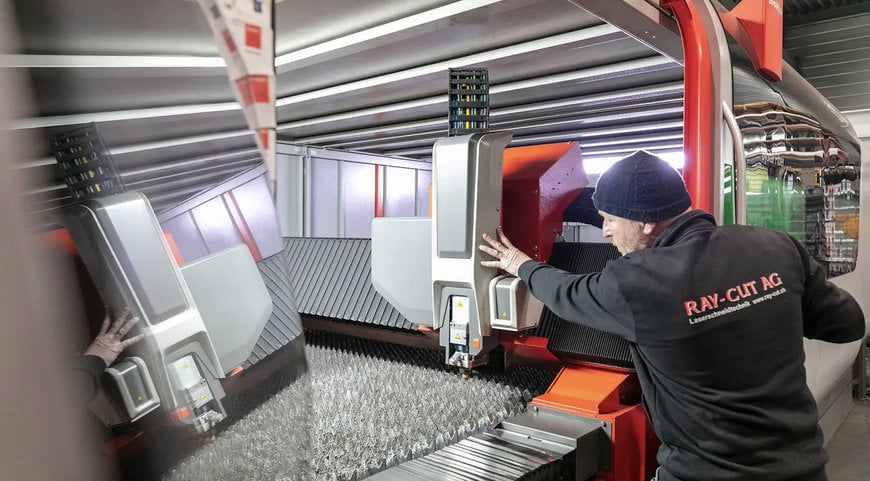www.magazine-industry-usa.com
26
'21
Written on Modified on
FROM VINTAGE TO E-CAR
A trio of automotive enthusiasts at Triamp needed components for the electrification of three vintage cars. The metal processing company Ray-Cut manufactured these parts on the ByStar Fiber with 10 kilowatts. More than 2,000 working hours were required to convert two Jaguar E-Types and a second-generation Volkswagen Type 2 to high-performance electric drives while remaining as true to the original form as possible.

Jaguar built in 1969 becomes a modern e-car
There it stands, the design icon with its fluid lines, sculpted from sheet metal and chrome. At first glance, the burgundy Jaguar E-Type 2+2, which is on display on Ray-Cut’s shop floor in Lyss (Switzerland) today, is entirely original. But if you pop the long hood of this vintage 1969 sports car, you will not find an internal combustion engine. The 4.2-liter in-line six-cylinder engine had to make way for an electric motor. The rest of the space under the hood is occupied by four metal cases filled with battery cells and a computer. Two additional battery packs can be found in the rear, where the spare wheel and fuel tank used to be.

Sheet metal cases for the batteries and steel plate for connection
“We invested a great deal of effort into finding the best possible solution,” says Simon Jeger. He launched the Triamp project together with his father Felix Stoffel. The two had been dreaming of tackling a major project together for a long time. Over the years, the idea matured to electrify the Jaguar E-Type. To expand their know-how, the two brought Andreas Weibel, the owner of a car repair shop, on board. In addition to his mechanical expertise, he also contributed his Volkswagen T2 bus to the project. Thus, Triamp was born.
“There would have been simpler solutions, but we wanted to stay as close to the original as possible” - Simon Jeger, Triamp

The Volkswagen enthusiast Andreas Weibel was the one who established contact with the metalworking company Ray-Cut. In addition to the sheet metal cases for the batteries, Triamp needed a wide variety of suspension parts as well as a solid steel plate to connect the electric motor to the transmission. For Ray-Cut, the project was a matter of the heart: “Every now and then, we produce parts for our friends’ cars or motorbikes,” Sven Heukeroth says. The parts were cut using a 10-kilowatt ByStarFiber, which is already equipped with the next-generation cutting head.
“Our field tests help Bystronic with the further development of their fiber lasers” - Sven Heukeroth, Ray-Cut AG

As fast as the original
Triamp’s humming vintage cars, however, are in no way inferior to the growling originals. The VW Type 2 has already completed its electric maiden voyage. Thanks to its electric drive, the gray 1979 pick-up has gained speed and with a range of 400 kilometers, it can compete with modern electric cars. Simon Jeger is confident that the two E-Types will also be able to rival the originals: “Thanks to the constant torque of the electric motors, we will certainly be able to keep up in terms of acceleration,” he explains. His goal is to outperform Jaguar’s own prototype, with which the British carmaker has revived the E-Type as an electric car. Simon Jeger hopes to achieve a range of up to 350 kilometers.
www.bystronic.com

